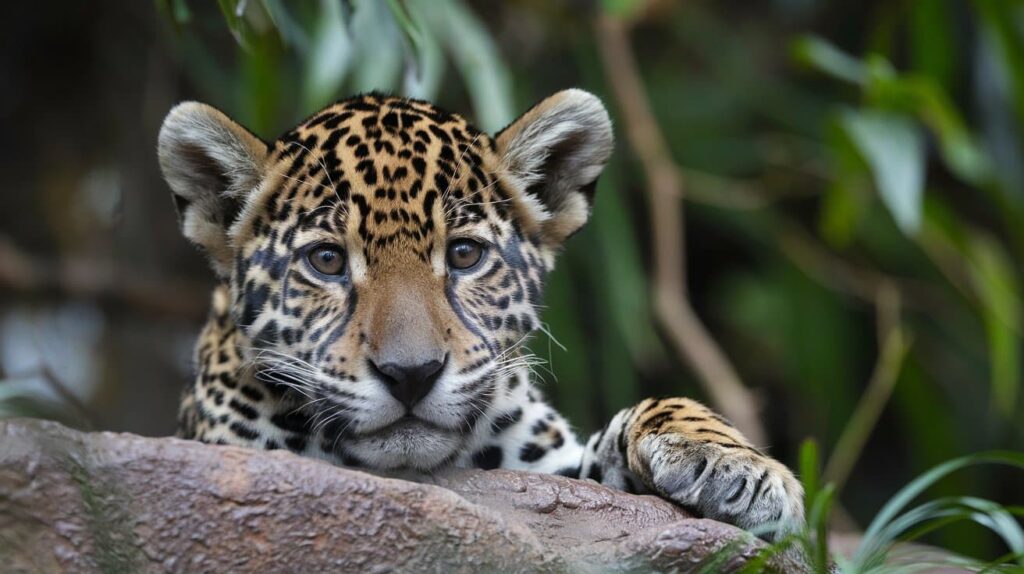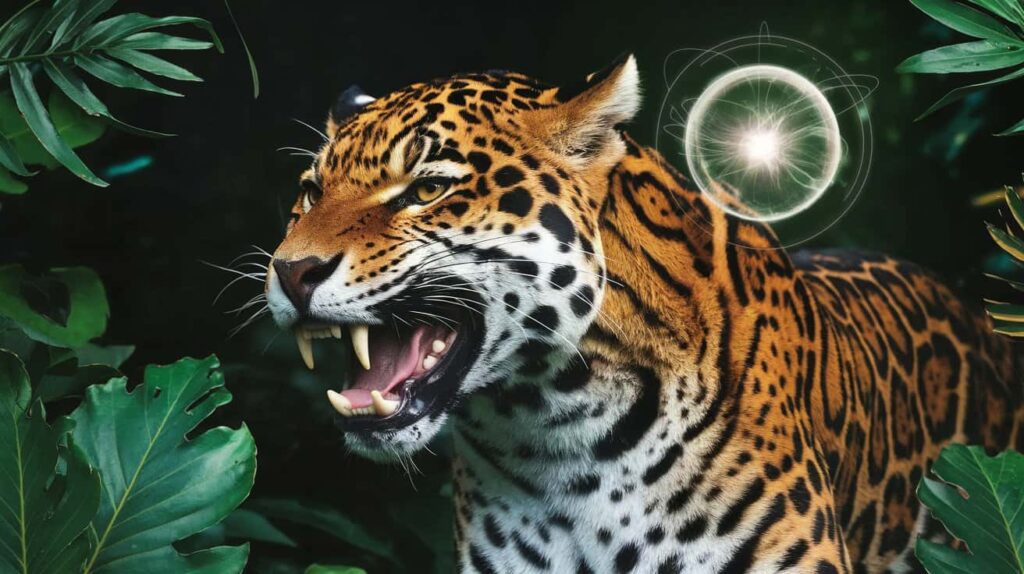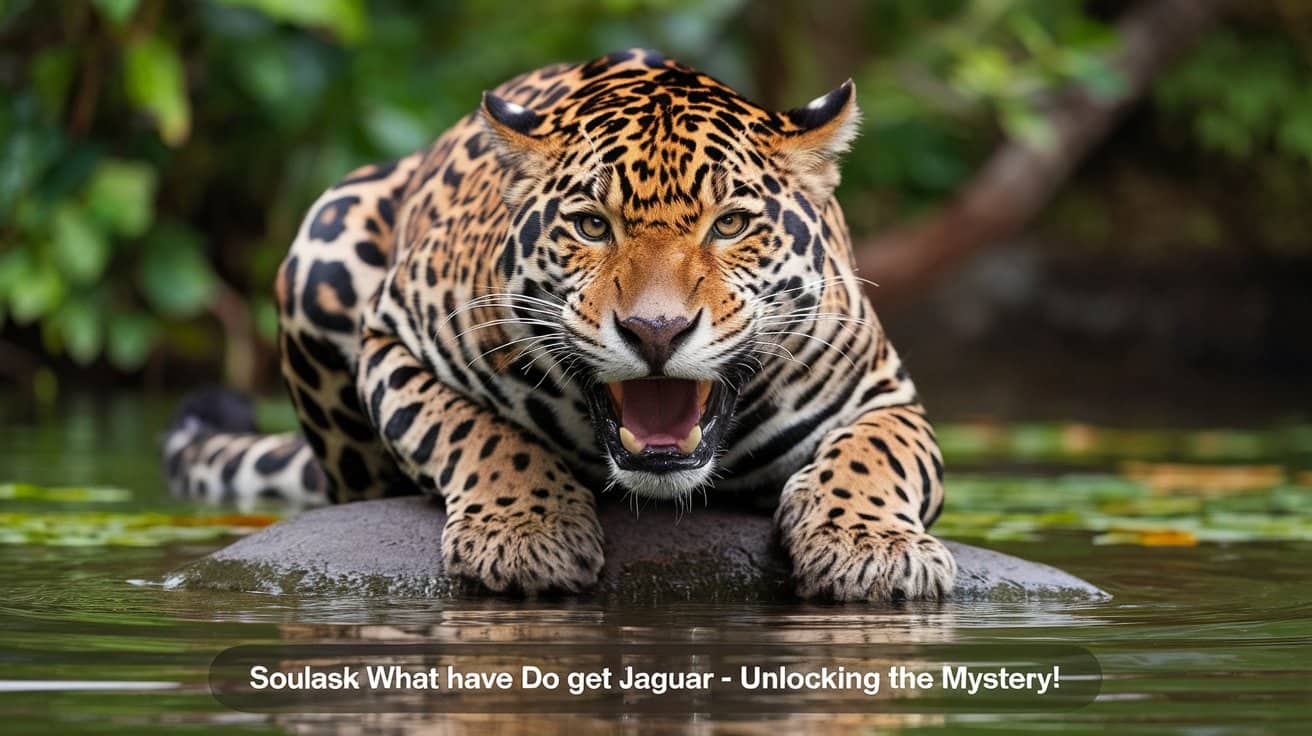Jaguars, the largest big cats in the Americas, have captivated the hearts and minds of many with their remarkable beauty and strength.
The phrase soulask what have do get jaguar reflects a curiosity about the significance of jaguars in nature. These majestic big cats play a crucial role in maintaining ecosystem balance and face various threats, including habitat loss and poaching. Understanding and protecting jaguars is vital for biodiversity and the health of their habitats.
In this comprehensive guide, we’ll delve into the world of jaguars, shedding light on their characteristics, challenges they face, and what we can do to help protect them.
Introduction To Jaguars – A Beginner’s Guide!
Jaguars (Panthera onca) are iconic symbols of strength and beauty in the animal kingdom. Known for their distinctive coat marked with rosettes, they are primarily found in rainforests, swamps, and grasslands across Central and South America.
The term “soulask what do you have do get jaguar” emphasizes the significance of understanding these creatures, both to appreciate their role in nature and to foster efforts for their conservation.
| Aspect | Details |
| Average Height | 24 to 30 inches (61 to 76 cm) at the shoulder when fully grown. |
| Average Length | 5 to 6 feet (1.5 to 1.8 meters), not including the tail, which adds an additional 2 to 3 feet (60 to 91 cm). |
| Average Weight | 100 to 250 pounds (45 to 113 kg); females are generally smaller than males. |
| Coloration | A distinctive golden-yellow coat with black rosettes and spots. |
| Walking Style | Jaguars walk in a unique way, often using a “pacing” gait, where the left front and left hind leg move together, followed by the right front and right hind leg. |
| Swimming Ability | water as a hunting ground, diving for fish and prey like caimans. |
| Running Speed | Jaguars can sprint up to 50 km/h (31 mph) over short distances, |
The Anatomy Of A Jaguar – The Secrets Of Nature’s Perfect Predator!
Jaguars are uniquely adapted to their environments. They have powerful limbs, a robust body, and a large head, which give them remarkable strength. Here are some key anatomical features:
Physical Characteristics
- Size: Adult jaguars typically weigh between 100 to 250 pounds and can measure up to 6 feet in length, not including the tail.
- Coat: Their fur is golden-yellow with black rosettes, allowing them to blend seamlessly into their forest surroundings.
- Jaw Strength: Jaguars possess one of the strongest bites in the animal kingdom, capable of crushing turtle shells and even biting through bone.

Sensory Abilities
- Vision: Jaguars have excellent night vision, making them formidable hunters in low-light conditions.
- Hearing: Their acute hearing helps them detect prey and potential threats from a distance.
Habitat And Range – Jaguars In The Wild!
Jaguars are primarily found in tropical rainforests, but their range extends to savannas, scrublands, and wetlands.
Geographic Distribution
- Central America: Jaguars inhabit areas from southern Mexico through Central America.
- South America: They are widely distributed in the Amazon rainforest, the Pantanal, and parts of the Andes.
Preferred Habitats
- Rainforests: Dense foliage provides cover for stalking prey.
- Wetlands: Jaguars are excellent swimmers and often hunt in water, making swamps and rivers ideal hunting grounds.
Diet And Hunting Behavior – How Jaguars Hunt For Survival!
As apex predators, jaguars play a crucial role in maintaining the balance of their ecosystems.
Diet
Jaguars have a diverse diet that includes:
- Mammals: Such as capybaras, peccaries, and deer.
- Reptiles: Including caimans and snakes.
- Fish: They are known to hunt for fish in rivers.
Hunting Techniques
- Stalking: Jaguars are stealthy hunters, using their camouflage to approach prey.
- Ambush: They often ambush prey from trees or tall grass.
- Bite Technique: Unlike other big cats, jaguars tend to bite directly through the skull of their prey, ensuring a quick kill.
Social Structure And Behavior – Uncovering Their Behavior!
Jaguars are primarily solitary animals, with distinct behaviors that ensure their survival.
Solitary Nature
- Territorial Behavior: Males have larger territories than females and may overlap with female territories during mating seasons.
- Marking Territory: Jaguars mark their territory with urine and claw marks on trees.
Communication
Jaguars communicate through vocalizations, scent marking, and visual signals. They are known to roar, which can be heard over long distances.
Reproduction And Life Cycle – From Cubs To Apex Predators!
Understanding the reproductive behavior of jaguars is essential for conservation efforts.
Mating
- Breeding Season: Jaguars can breed year-round, but peaks occur in the rainy season when food is abundant.
- Courtship: Males will display aggressive behaviors to attract females.
Gestation and Cubs
- Gestation Period: Approximately 93 to 105 days.
- Litter Size: Usually 2 to 4 cubs, which are born blind and depend on their mother for the first few months.
Cubs’ Development
Cubs begin to learn hunting skills at around six months and stay with their mother for about two years before becoming independent.
You Maybe Interested In: Fauxmoi – Where Celebrity Rumors Come Alive!
The Importance Of Jaguars In Ecosystems – Their Crucial Role In Ecosystems!
Jaguars play a vital role in their ecosystems, impacting prey populations and maintaining biodiversity.

Apex Predator
- Prey Regulation: By hunting herbivores, jaguars help control their populations, which in turn supports the growth of vegetation.
- Biodiversity: Healthy jaguar populations contribute to a balanced ecosystem, supporting various other species.
Keystone Species
Jaguars are considered a keystone species, meaning their presence is crucial for maintaining the structure of the ecological community.
Threats To Jaguar Populations – Top Threats To Jaguar Populations!
Despite their strength and adaptability, jaguars face numerous threats that jeopardize their survival.
Habitat Loss
- Deforestation: Logging and agriculture have led to significant habitat destruction.
- Urbanization: Expanding cities encroach on jaguar territories, leading to habitat fragmentation.
Poaching and Illegal Trade
- Hunting: Jaguars are hunted for their beautiful pelts and body parts, which are used in traditional medicine.
- Conflict with Humans: As humans encroach on their territories, jaguars may prey on livestock, leading to retaliatory killings.
Climate Change
- Changing Environments: Climate change threatens the stability of jaguar habitats, affecting prey availability and habitat suitability.
Conservation Efforts – Saving The Jaguars!
Conservation organizations and governments are actively working to protect jaguar populations and their habitats.
Protected Areas
- National Parks and Reserves: Establishing protected areas is crucial for safeguarding jaguar habitats.
- Wildlife Corridors: Connecting fragmented habitats allows jaguars to move freely and maintain genetic diversity.
Community Engagement
- Local Initiatives: Involving local communities in conservation efforts helps promote coexistence and protect jaguars.
- Education: Raising awareness about the importance of jaguars fosters a culture of conservation.
Research and Monitoring
- Tracking Programs: Research initiatives help monitor jaguar populations and assess their health.
- Data Collection: Gathering data on jaguar behavior and habitats aids in developing effective conservation strategies.
How You Can Help – Become A Jaguar Advocate!
You don’t have to be a wildlife expert to make a difference for jaguars. Here are some ways you can contribute:
Support Conservation Organizations
- Donations: Contributing to reputable wildlife organizations that focus on jaguar conservation can make a significant impact.
- Volunteer: Look for local or international opportunities to volunteer for wildlife conservation projects.
Raise Awareness
- Educate Others: Share information about jaguars and their importance in ecosystems with friends, family, and social media followers.
- Advocate for Change: Support policies that protect wildlife and their habitats.
Sustainable Choices
- Responsible Consumption: Opt for products that are sustainably sourced and contribute to conservation efforts.
- Reduce Your Footprint: Participate in initiatives aimed at reducing deforestation and promoting sustainable land use.
Closing Remarks:
Jaguars are not only magnificent creatures but also vital components of their ecosystems. The phrase “soulask what to get jaguar” highlights our responsibility to understand and protect these incredible animals.
By raising awareness, supporting conservation efforts, and making informed choices, we can contribute to the survival of jaguars and the health of our planet.
FAQs
What Is The Average Lifespan Of A Jaguar In The Wild?
Jaguars typically live for 12 to 15 years in the wild, although some individuals may reach up to 20 years in protected environments.
Are Jaguars Dangerous To Humans?
While jaguars are powerful predators, they rarely pose a threat to humans. Most encounters occur when jaguars feel threatened or when humans encroach on their territory.
What Do Jaguars Eat?
Jaguars are carnivorous and have a diverse diet that includes deer, capybaras, peccaries, and various reptiles and birds.
How Many Jaguars Are Left In The Wild?
Estimates suggest there are around 173,000 jaguars left in the wild, but populations are declining due to habitat loss and poaching.
What Is Being Done To Protect Jaguars?
Conservation efforts include creating protected areas, promoting sustainable land use, engaging local communities, and reducing poaching.
Can Jaguars Swim?
Yes, jaguars are excellent swimmers and often hunt for fish and other prey in water.
How Do Jaguars Communicate?
Jaguars communicate through vocalizations like growls and roars, as well as scent marking and body language.
Are There Any Subspecies Of Jaguars?
There are no officially recognized subspecies of jaguars, but regional variations exist in size and coat patterns.
What Threats Do Jaguars Face?
Major threats include habitat loss due to deforestation, poaching, and conflicts with humans over livestock predation.
How Can I Get Involved In Jaguar Conservation?
You can support conservation organizations, raise awareness, and make sustainable choices to help protect jaguars and their habitats.




